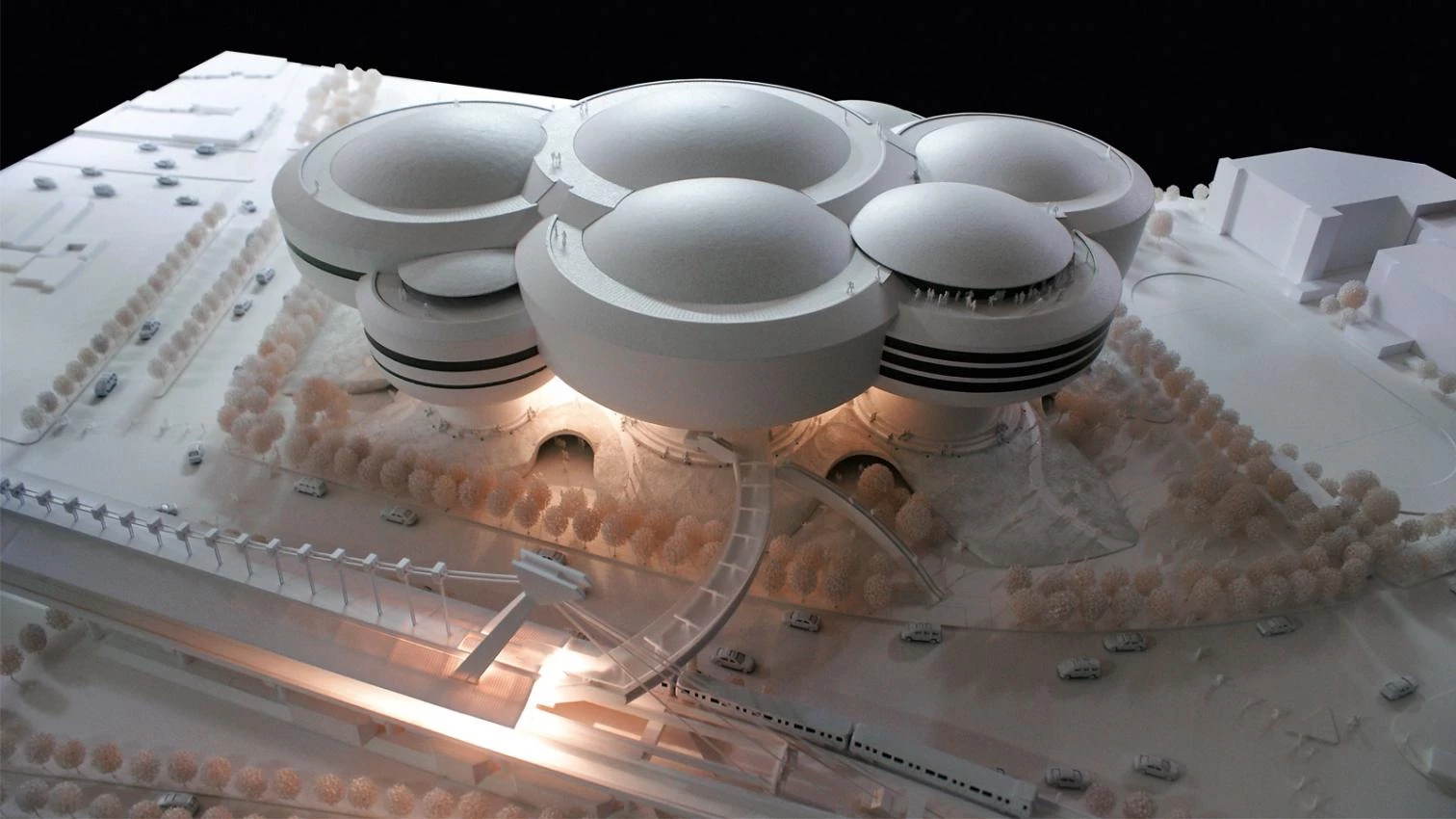
In the new, thermodynamically-tuned practice of Iñaki Ábalos and Renata Sentkiewicz, the aloof, prismatic volumes of the Ábalos + Herreros era, heirs of Alejandro de la Sota in their technical directness and formal austerity, have evolved into buildings that grow like organic tubers, mushrooms and trees, or emerge as eccentric landforms at a macro-urban scale, while inhaling cooling downdrafts and exhaling ascending columns of heated air.
The firm has taken on the current mantra of sustainability, of the responsible use of energy and resources, not as a call for formal restraint, nor as merely a set of technical standards unrelated to the theory and methodology of design. Instead, they are treating the issues raised by sustainability as something of a paradigm shift in the way that architecture is conceived. They refer to this new paradigm under the general theme of the thermodynamic, as in Ábalos’ coinage of ‘thermodynamic beauty.’ In his article ‘Aesthetics and Sustainability: Alternatives’ (2008), Ábalos quotes Sanford Kwinter’s use of the term to define “the abandonment of the ‘tectonic’ model of traditional knowledge of architecture and its teaching, and replacing them with a new ‘biotechnical’ conception/teaching, that can provide the architect with instruments that allow him/her to think of his/her buildings as live organisms, entities permanently exchanging energy with their environment.” In the work of Ábalos + Sentkiewicz, this theme reinvigorates concepts of building type and regional difference, and extends to an urban and regional scale the range of concerns (quantified as information data and performance parameters) that they take into consideration during the development of a design.
A second critical concept, which Ábalos makes reference to with terms such as ‘beauty’ and ‘the picturesque,’ also underlies this new work. The firm adapts these 18th century aesthetic categories as a dialectical position, which they counterpose to the merely rational management of the quantified data that largely comprises what was formerly known as the design problem. Beauty, and the search for new forms of beauty, represents the dimension of subjective cultural and experiential values that the architect brings to the table, to begin the process in which the design solution is wrestled from the multiple and sometimes conflicting parameters of the design problem... [+]





